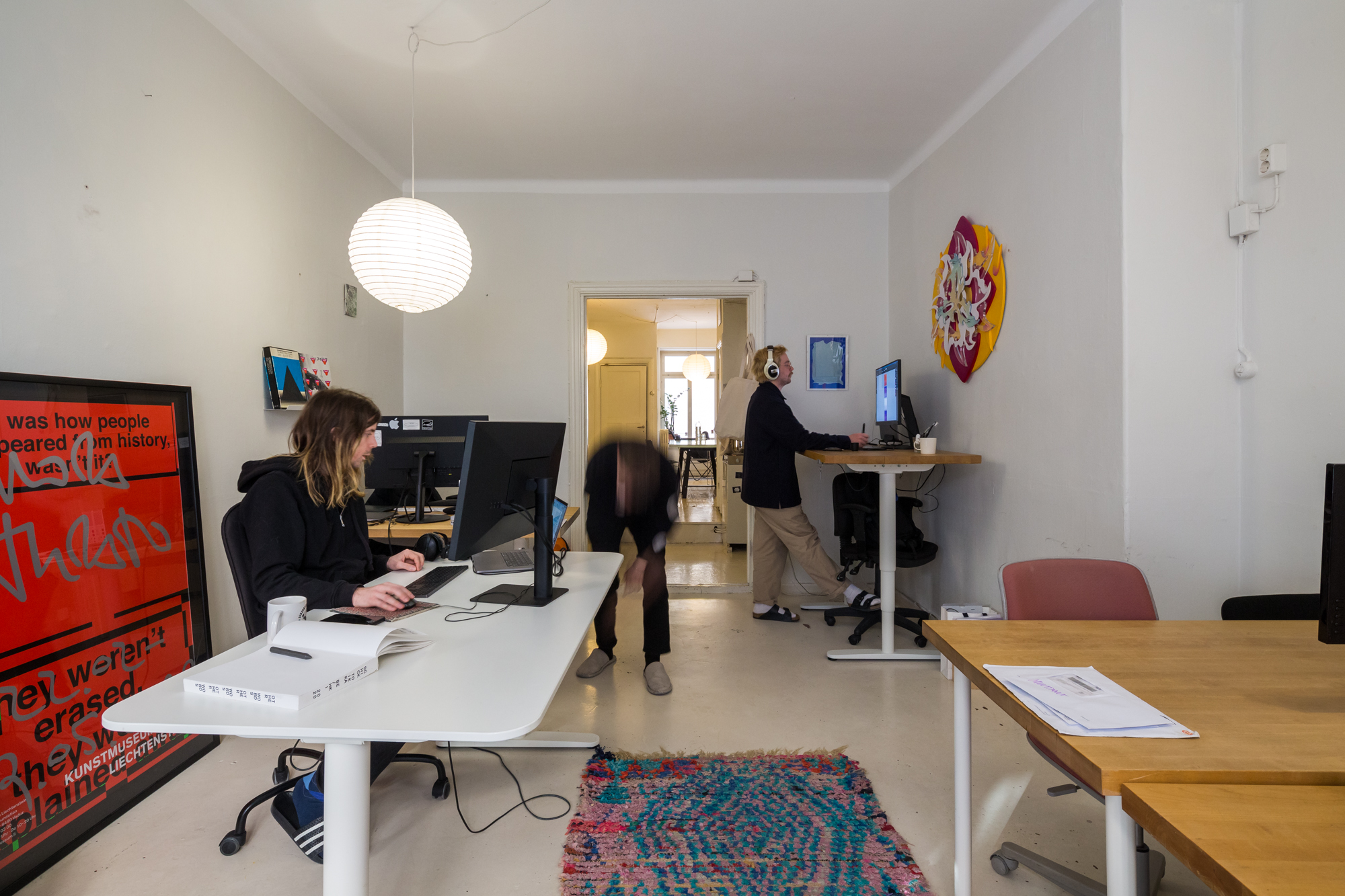
Weekly Studio: TSTO
With an office split between Helsinki and Paris, Weekly Studio meets the ten-year-old TSTO (Antti Uotila, Jonatan Eriksson and Matti Kunttu) via Zoom to talk about working from home, the pleasures of typography and why graphic design is a little bit like magic.
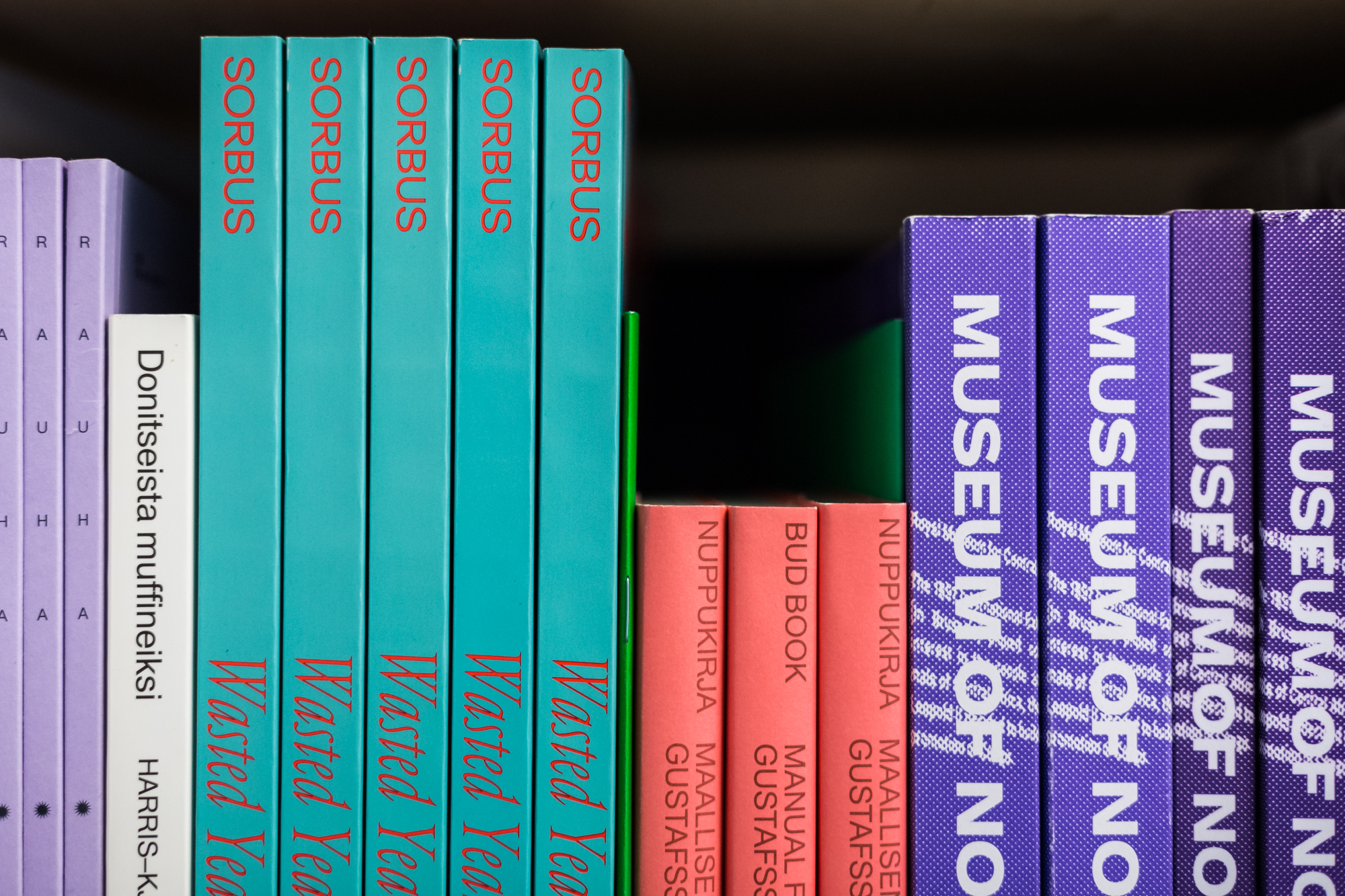
Has the pandemic had an impact on the studio?
Matti Kunttu: From a financial point of view, we’ve had some clients that haven’t been able to hold their events or exhibitions. So, Flow festival cancelled last summer and is still unsure about what events will take place this year. Speaking personally, I’m more concerned about whether or not we’re going to still going to have a team spirit if this drags on for much longer. It’s been my choice to work from home, but I’ve been feeling a little bit alienated. Though Jonathan is probably used to it after living abroad for so many years.
Jonatan Eriksson: I moved to New York in 2012, so I’ve been distance working for a while. I feel the pandemic has normalised certain aspects of working and living virtually though which has been nice. Even before the pandemic, we have tried to build a studio culture of hanging out in video games, something we used to do back when we first started the studio.
Antti Uotila: Although some clients have had to cancel their projects, others received support grants from the government so new projects are popping up. After the first shock, financially things haven’t been too dramatic. One major thing is that we finally had some time to do our own website. We even got a grant for it.

How do you work as a studio? Do you work collectively on every project?
Antti: It depends. We’re a team of four—the partners and designer Lars Högström—so it’s rare that everybody works on the same project simultaneously. But for bigger projects, for example we recently redesigned the Marimekko identity, we all work together. On smaller projects, we work in teams of one or two.
Would you say you have equal weighting in terms of skills and interests, or is one of you the illustration guy and another the typography nerd?
Matti: We’re all pretty type oriented, but Antti is a really good illustrator so he takes lead on illustration.
Jonatan: We’re not really a team of specialists. We all want to do similar things and be hands-on. But it’s interesting because we have talented young designers and developers working for us and they push us. It sometimes feels like now we’re the cynical old men stuck between art and business.
Antti: Cynical old generalists.
That’s hilarious! Do you really feel like you’ve become cynical old generalists?
Jonatan: No, we’re not really cynical. We always want to keep an open mind about things. We want to stay messy, to get ourselves into trouble and then figure out how to get out of trouble. That said, running a design studio is still a business and we live in a capitalistic world. Somewhere in the back of our minds is still an idea that we need to make the client happy.
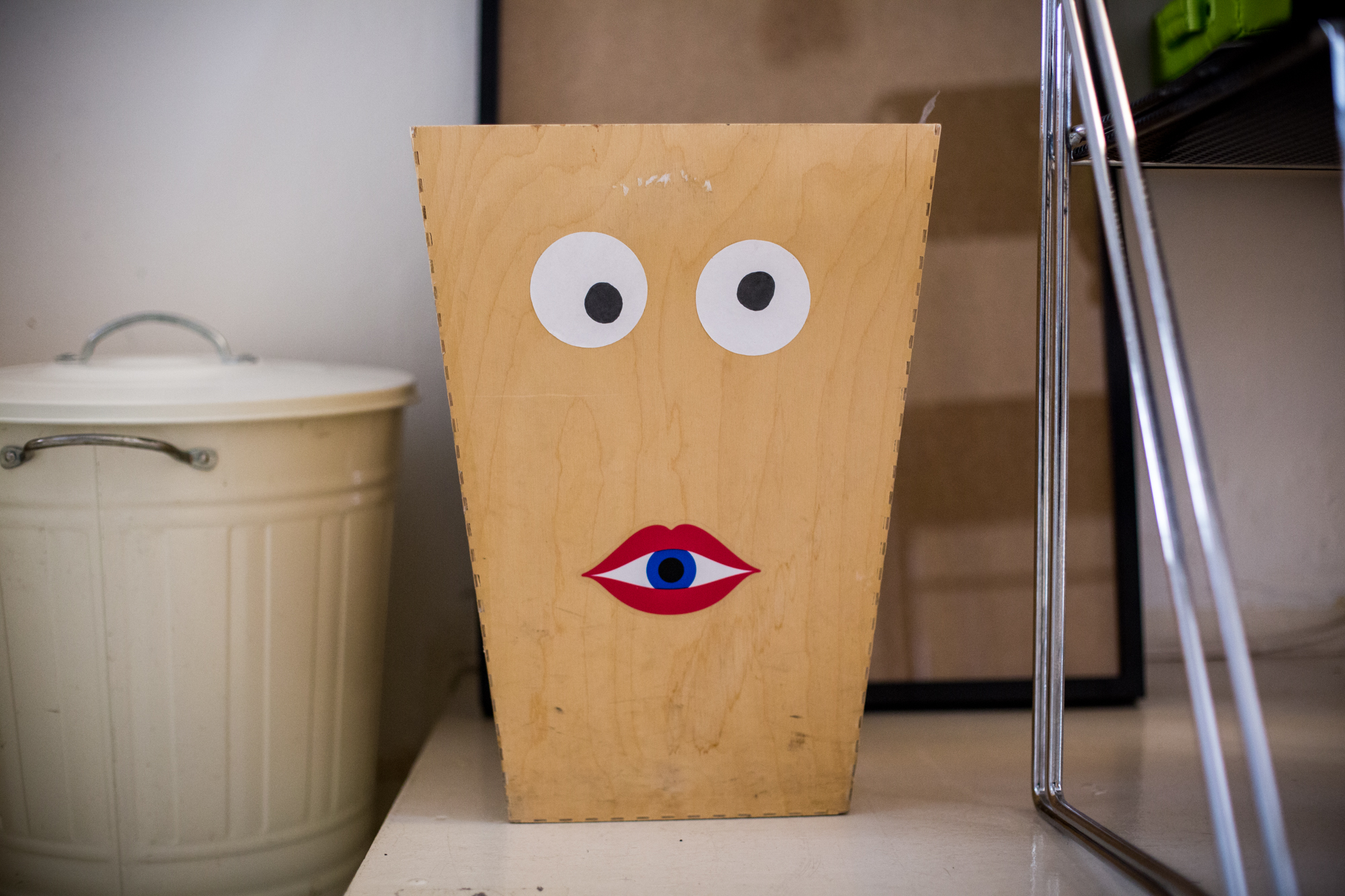
It’s hard to be punk forever. You get old and change your mind about things. Also, trying too hard to retain the same mind-set isn’t very punk, it’s getting stuck in your ways.
Matti: I think we’ve definitely matured in that respect. We’ve had TSTO for ten years now and we’ve learned the business from many angles. If you solidify your approach, things get boring quickly. For me, it’s much more about figuring out ways to keep things interesting instead of taking a rigid, rock star position.
Antti: Exactly. When I studied at the University of Art and Design here in Helsinki, on the first day the teacher said to us that graphic designers are not rock stars and I remember being a bit disappointed. But after a few years working, I realised I understood what the teacher meant.
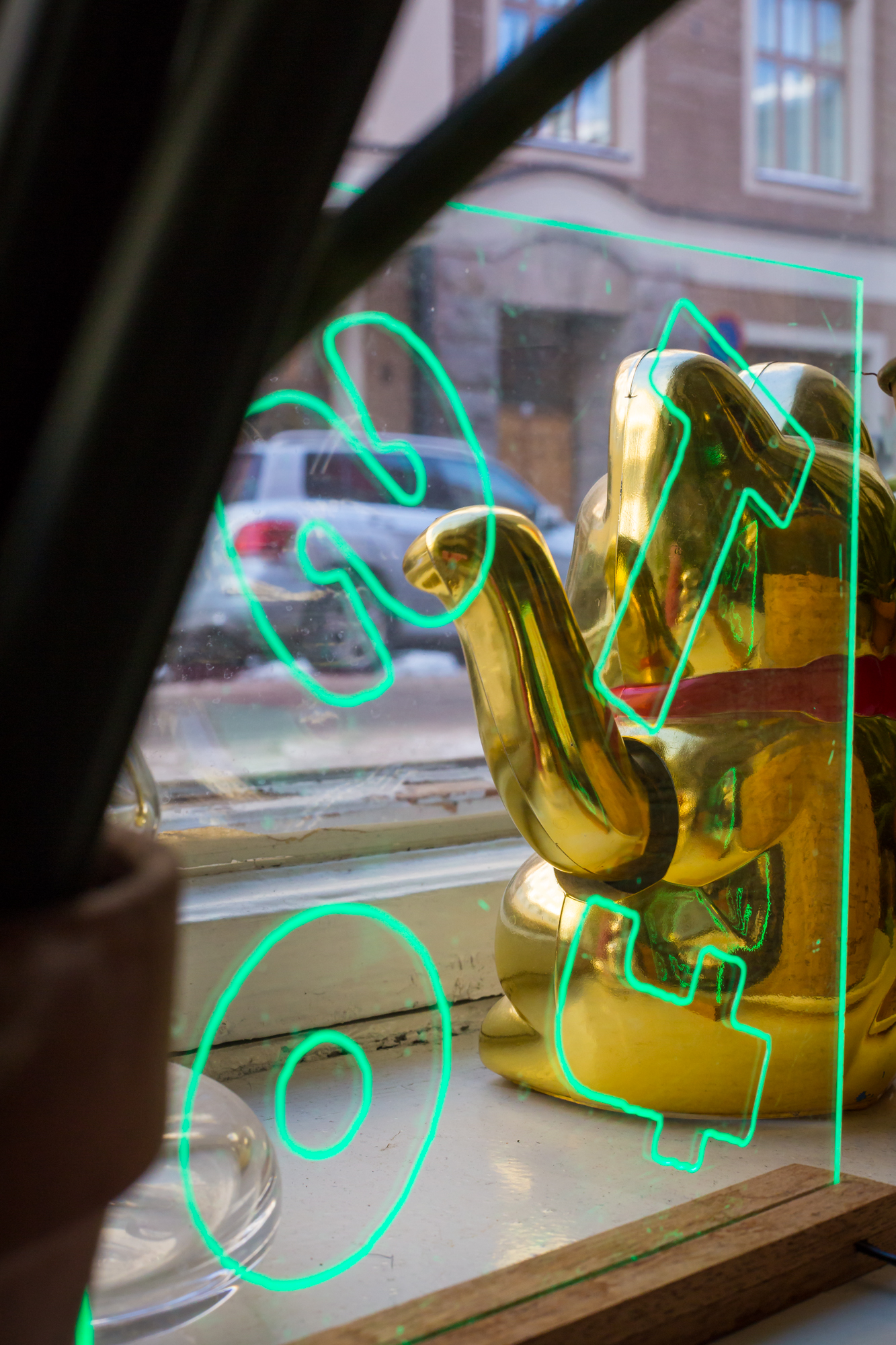
In my experience, graphic design seems like the hardest design discipline for the general public to understand. Why do you think that is?
Antti: Well, a furniture designer designs chairs that people sit on. Architects design entire buildings that people can go inside. And we design things like letterhead, deciding how a word should look and what colour it should be. I think many graphic designers have a sense that they are not appreciated, but I don’t think we’ve suffered because of it. I don’t think we have low self-esteem.
I didn’t mean it quite like that, more in the sense of why it’s difficult for people to even understand what you do. Imagine you’re in America on a plane and the person next to you says, ‘So what do you do for a living?’
Matti: Antti and I actually had this exact conversation with an American on a plane in New York. He held up a bottle of water he was drinking and said, ‘So, you would take this bottle of water and design the label, right? And how much would you charge for that?’ It was like he could only understand our work in the context of how much we would charge for it.
Jonatan: For me, it’s been interesting to find out that our work is often about subtleties. And you never know who’s going to get it. Sometimes we work for people and then they take our design, let’s say it’s a logo, and they build on it and make something really interesting. And then sometimes we make something really beautiful and then people who say that they love it almost ruin it by using it in ways that just don’t work. It’s almost an enigma, why do we do this subtle thing and where does this symbolic effort get us.
Matti: Graphic design as such is such a broad spectrum of things that surrounds us everywhere. We’re really only working with a narrow part of it, but for us that part is where you can discover things that feel like a bit of magic.

Magic and enigma. To me, graphic design is like grammar. You know that there are rules, but there are also exceptions to the rules and it can sometimes be hard to understand that. I wonder if that’s why it can feel a little mystifying to people. Graphic design feels like occult magic and each design firm is its own coven of witches. Maybe that’s ridiculous?
Jonatan: I think that’s true. We create the theatre or the context for the rules and then we play the rules out and everything makes sense. But at the end of the day, it’s communication that’s important.
But the idea of communication is quite complex because you have clients on two sides. Like with Flow Festival, you’re communicating to the client about what they want, but then you’re also communicating to audience of the festival. How do you approach that as a studio?
Jonatan: That’s always an interesting idea, the question of who we’re designing for. I’m designing for the client and for the audience or user. But I’m also designing for my friends, for myself, sometimes for my professors or past generations of designers. You create these relationships in your head and it all affects the end result.
Matti: The question of communication is also about the bigger picture. For example, how do our designs contribute to contemporary aesthetics. It’s not something we often sit down together and talk about, but I think this idea of being interested in speaking to a broader context is something we share.
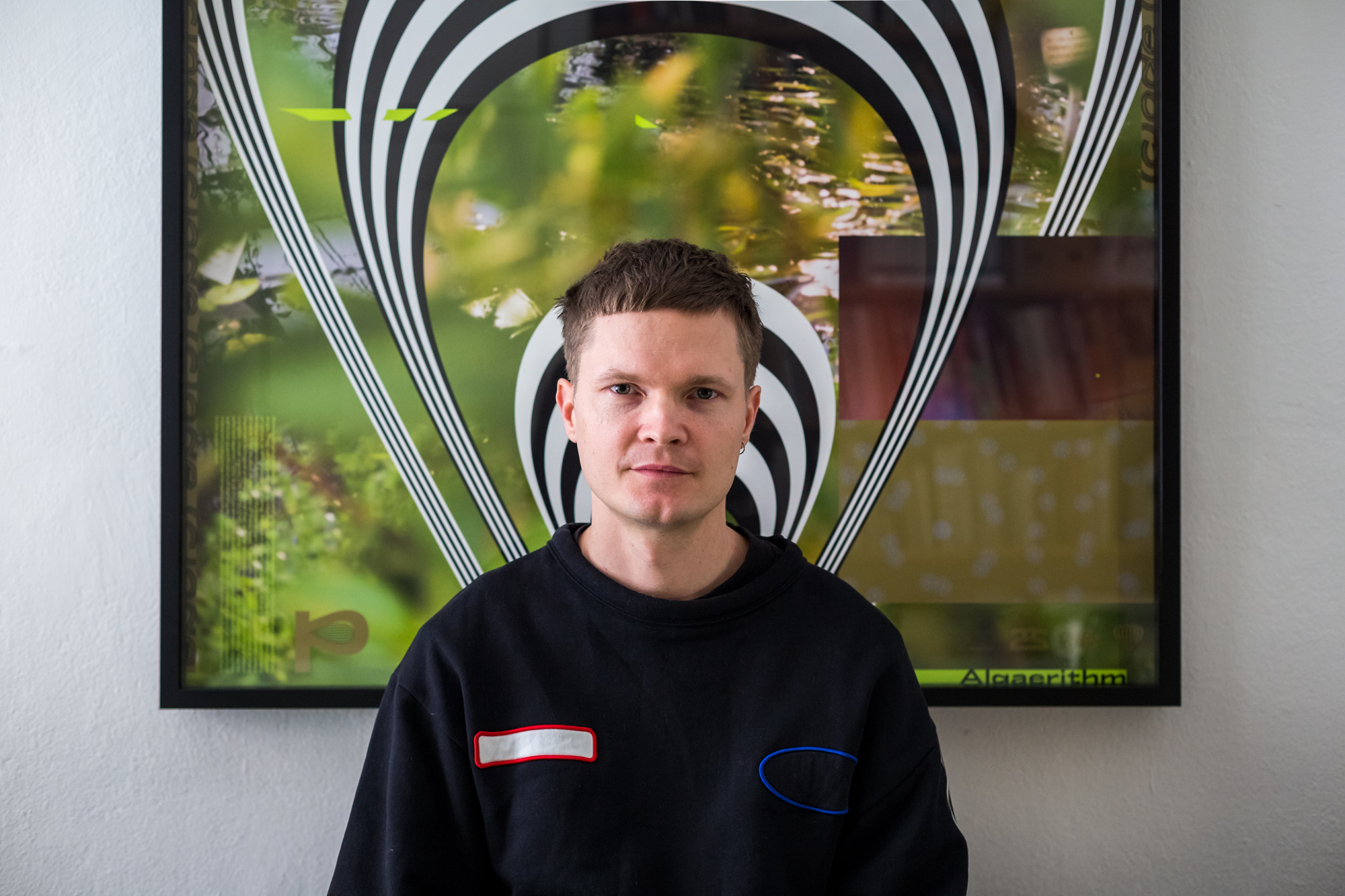
Does it bother you if a client take work and uses it in a way that you didn’t intend?
Antti: It can be hard if you create a nice identity and see it implemented differently to how you imagined. Of course, you can create detailed guidelines but they aren’t always followed. It often happens that the identity doesn’t get used how we intended and sometimes that can be disappointing.
Matti: But it’s also rewarding when working with long-term clients, adding to previous work, solidifying the strength of the identity and creating more building blocks. And even when you make very detailed design guidelines, the whole thing ends up looking very corporate and that’s not really our thing.
Antti: If you have to make a bullet proof identity so that no one can mess it up, it’s very limiting in terms of what you can design in the first place.
Matti: You also have to trust the designers who come after you, that they’ll know how to work with what you’ve created.
That’s interesting. It reminds me of computer programmer friends who talk about inheriting bad code from programmers before them. Do you ever end up criticising your own earlier work when you do things like redesign or tweak a previous identity for a client?
Antti: Of course! We’re developing all the time and our tastes change, plus times and techniques change. Technology changes. Not to mention that we’re usually working to a time frame. Sometimes you just have to deliver something.
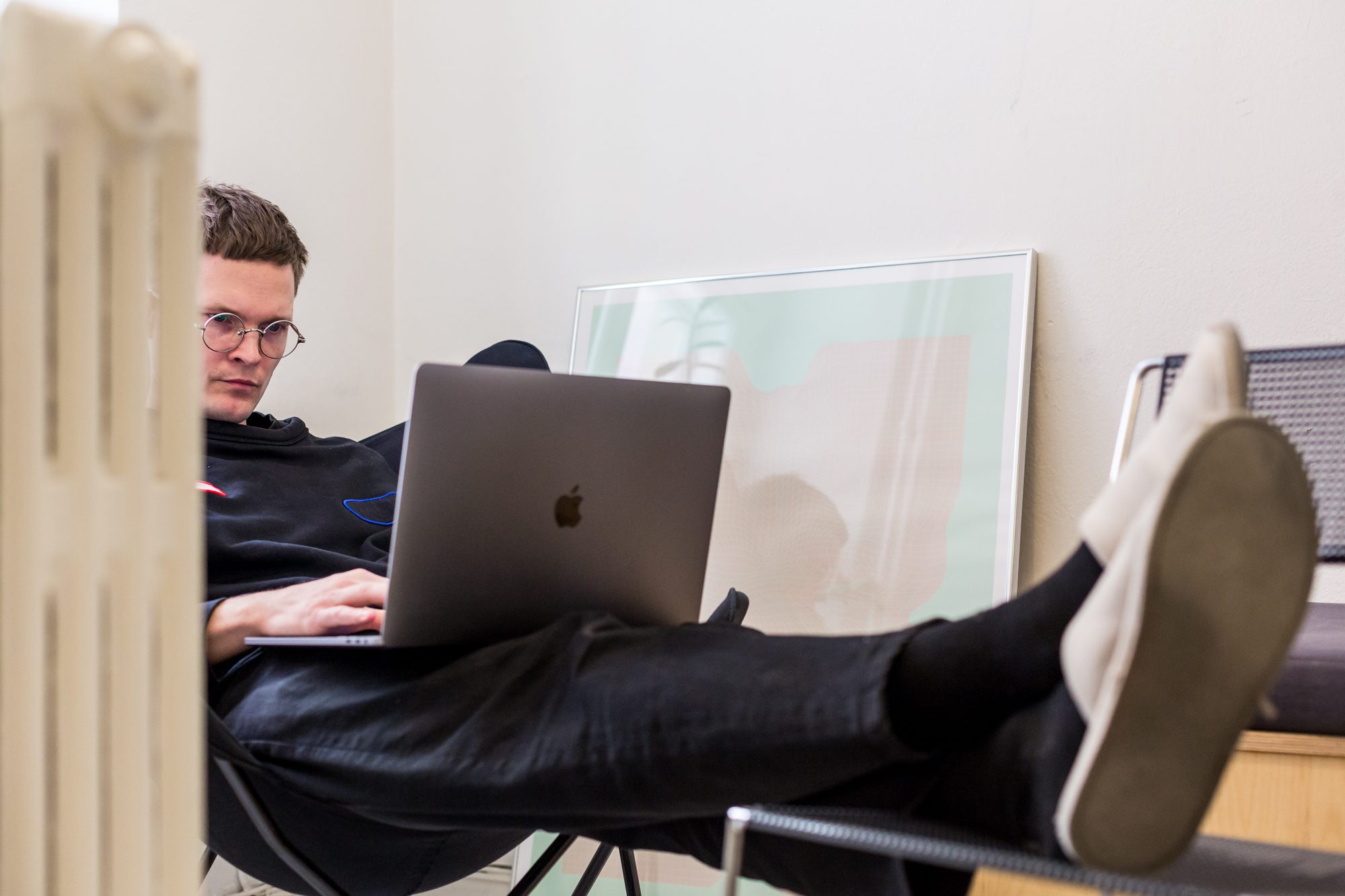
Ok, let’s talk about the work! What are some projects from the last couple of years that you’re really enjoyed working on?
Matti: It was an individual project, but I really enjoyed working on a book for Sorbus gallery, an artist-run space in Helsinki. They closed the space and then decided to make a memoir where they asked different people associated with the gallery to contribute text or other work. The book talks a lot about the structures of the art world and what it’s like to run an artist-run space, really interesting topics. If we’re drawn to individual projects like this, which often aren’t very well paid, it tends to be when we feel a connection to the client or the work they’re doing.
Antti: We worked on a really interesting collaboration last spring with Lauri who runs Schick Toikka, a type foundry. They were chosen as Finnish graphic designers of the year last year and for their award exhibition they invited other designers to collaborate. We chose a font that was just about to be released, Lyyra, and then we asked poet Ville Luoma-Aho to write texts and photographer Juho Huttunen to create abstract plant photographs in the botanic garden. It was much more of an artistic than a commercial project and very enjoyable to work on. We’ve also been working with Taidehalli for six or seven years, and it’s nice to work with a client when you have a long relationship. It means you can continue using an identity, but reconfiguring it and building on it in different ways for different exhibition campaigns. We also work a lot with Artek and Flow Festival. We did Flow Festival for the first time in 2011. It was our breakthrough as graphic designers, so that project has a special place for all of us.
Jonatan: Flow Festival is also something that Lauri worked on. Schick Toikka is probably our closest collaborator. Whenever we’re working on something where we really want to get into the tone of voice of the typography, we team up with them. For Flow Festival, we designed a whole family of typefaces, three of them with Lauri and then the others are tweaked versions of those originals.
Antti: Flow Festival has probably been the most total design project we’ve worked on. We’ve also been working with Schick Toikka on a new type family for the Marimekko project we’ve been doing.
Matti: It’s been nice working with Marimekko because they have a very good team of in-house designers who work alongside Marimekko’s art director, Laura Väinölä. We’re very into details and layouts and typography, but it’s nice when the client brings other things to the table like good photography. It’ll be interesting to see what they do with our design work going forward.
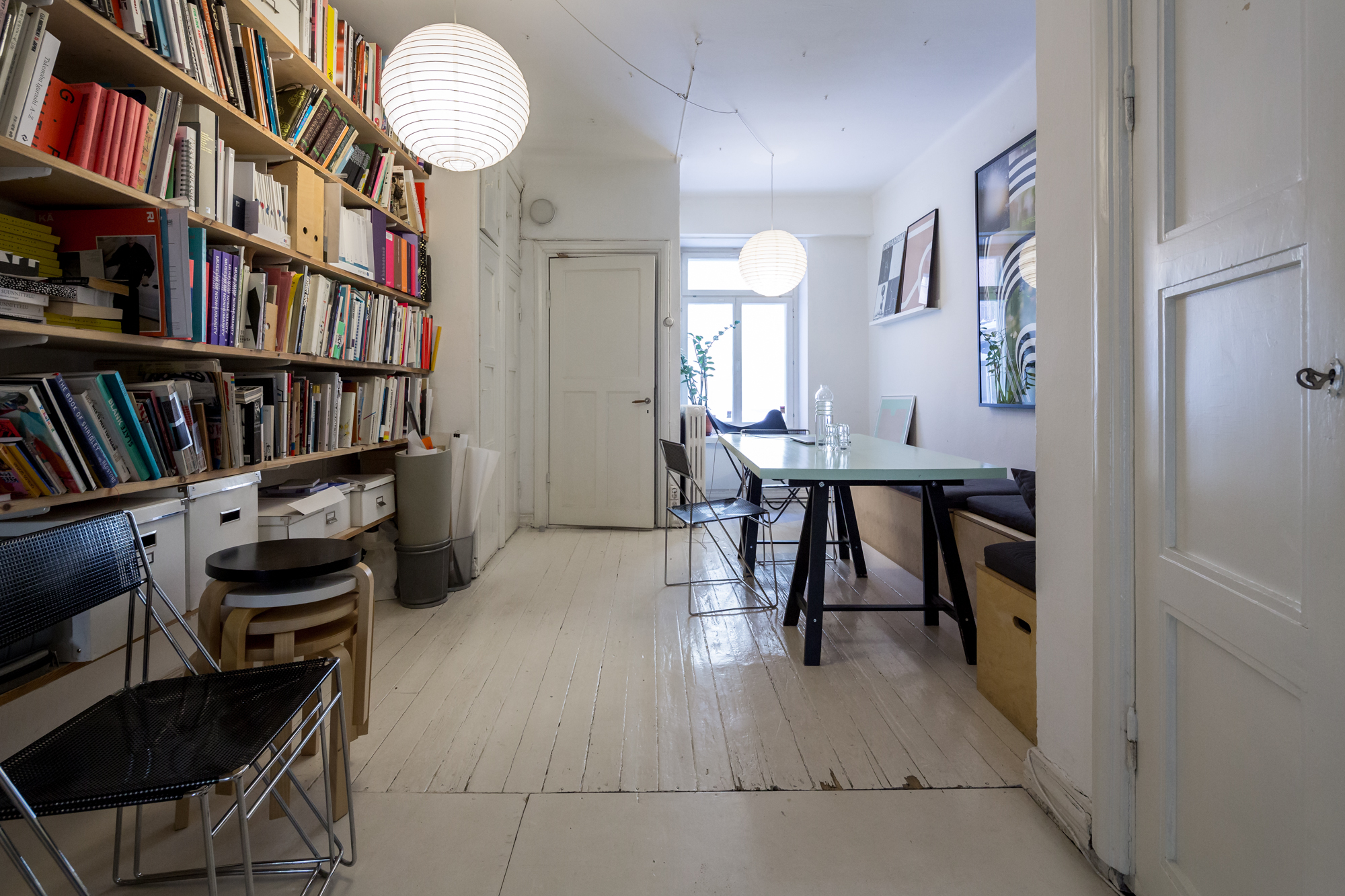
And what about your Helsinki studio space? Have you been in it for a long time?
Antti: We’ve had this space since 2014.
Matti: We used to be a couple of blocks away and then found this space which suits us better.
Antti: It’s actually our third space. We couldn’t have a party because of the pandemic, but TSTO turned ten last autumn. We’re hoping to have an 11th anniversary party later in the year. It’s a simple space, two rooms with a window onto the street at the ground floor. There’s a small kitchen and then a back space that leads onto a yard in the back. It’s not super big, but we’ve been trying to avoid growing the studio too much so that we can keep things simple and do work we enjoy.
Do you ever get people just walking in off the street and asking you to design business cards?
Antti: It doesn’t happen that often. We always joke that we should put a sign on the window: ‘business cards designed while you wait’.
Matti: Sometimes we have weird objects in the window or we make arrangements of things and sometimes people try to come in and buy them. We also have this board with letters on it that you can spell things out with. One time, I was waiting for something to upload to a print server and wrote a crazy text on the board. This strange guy walking by saw the text, then came in the studio and was like, ‘do you teach consciousness here?’ I said no, but I’m not sure he believed me.

Crystal Bennes is an American-born visual artist and writer based in Scotland. She writes for numerous architecture and design publications including Icon, Disegno, Metropolis, Frieze and Art Agenda, and has exhibited internationally at the Serlachius Museum, the Royal Scottish Academy and Science Gallery Dublin among others.
Veera Konsti on savolainen valokuvaaja, taiteilija ja tuore restauroinnin opiskelija. Hän viimeistelee tutkintoaan Aalto-yliopistoon ja muutti juuri Kouvolaan uusien opintojensa perässä. Konsti nauttii luonnon välittömästä läsnäolosta pikkukaupungeissa, uusien ihmisten kohtaamisesta kameran takaa ja yllättävistä yksityiskohdista. Weekly Studiota hän on kuvannut vuodesta 2016 lähtien.
Veera Konsti is a photographer, an artist and a recent restauration student. She is finalizing her studies in Aalto University and recently moved to Kouvola. Konsti enjoys the immediate presence of nature in small towns, meeting new people behind the camera, and surprising details. She has been photographing the Weekly Studio series since 2016.